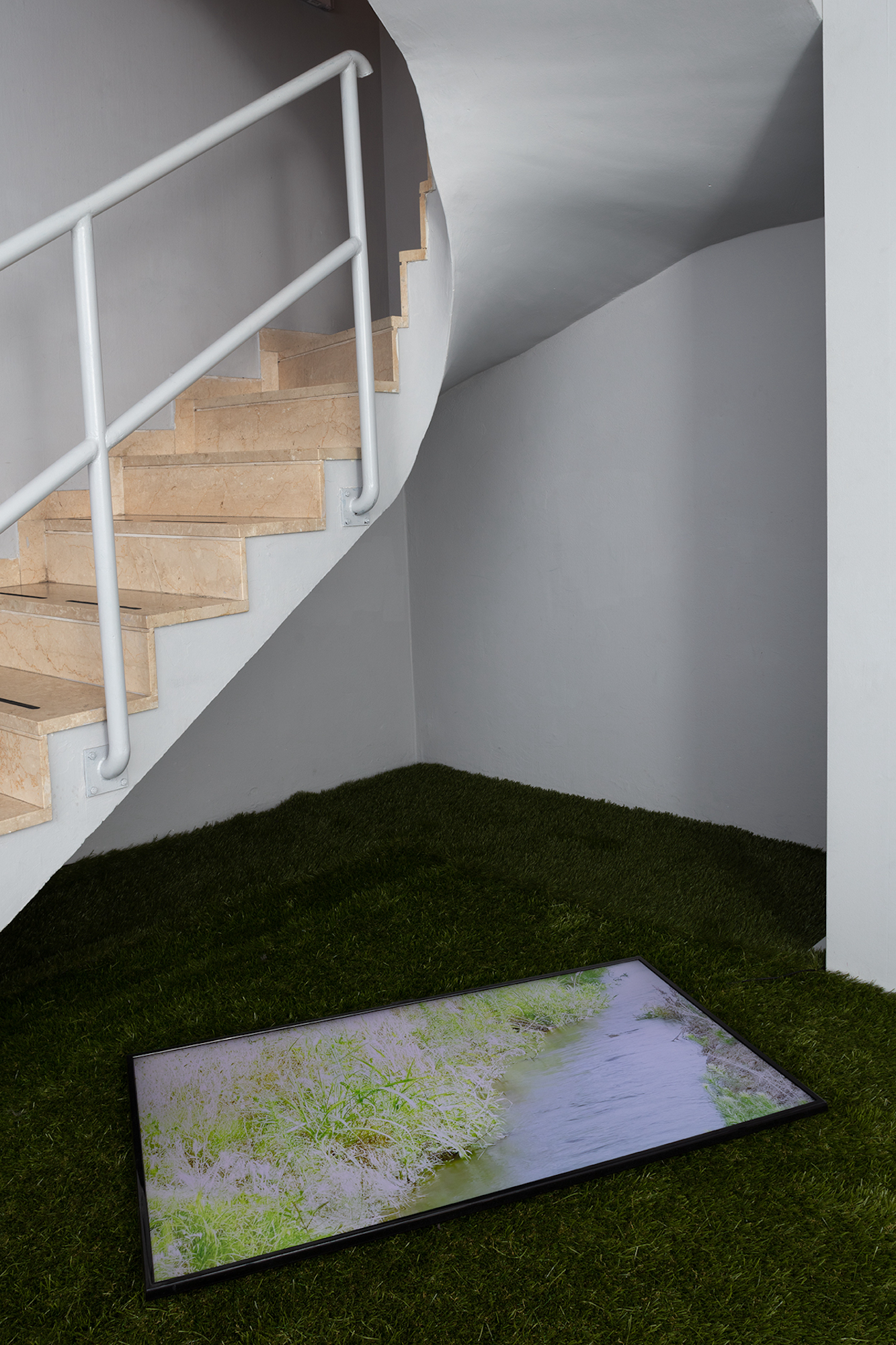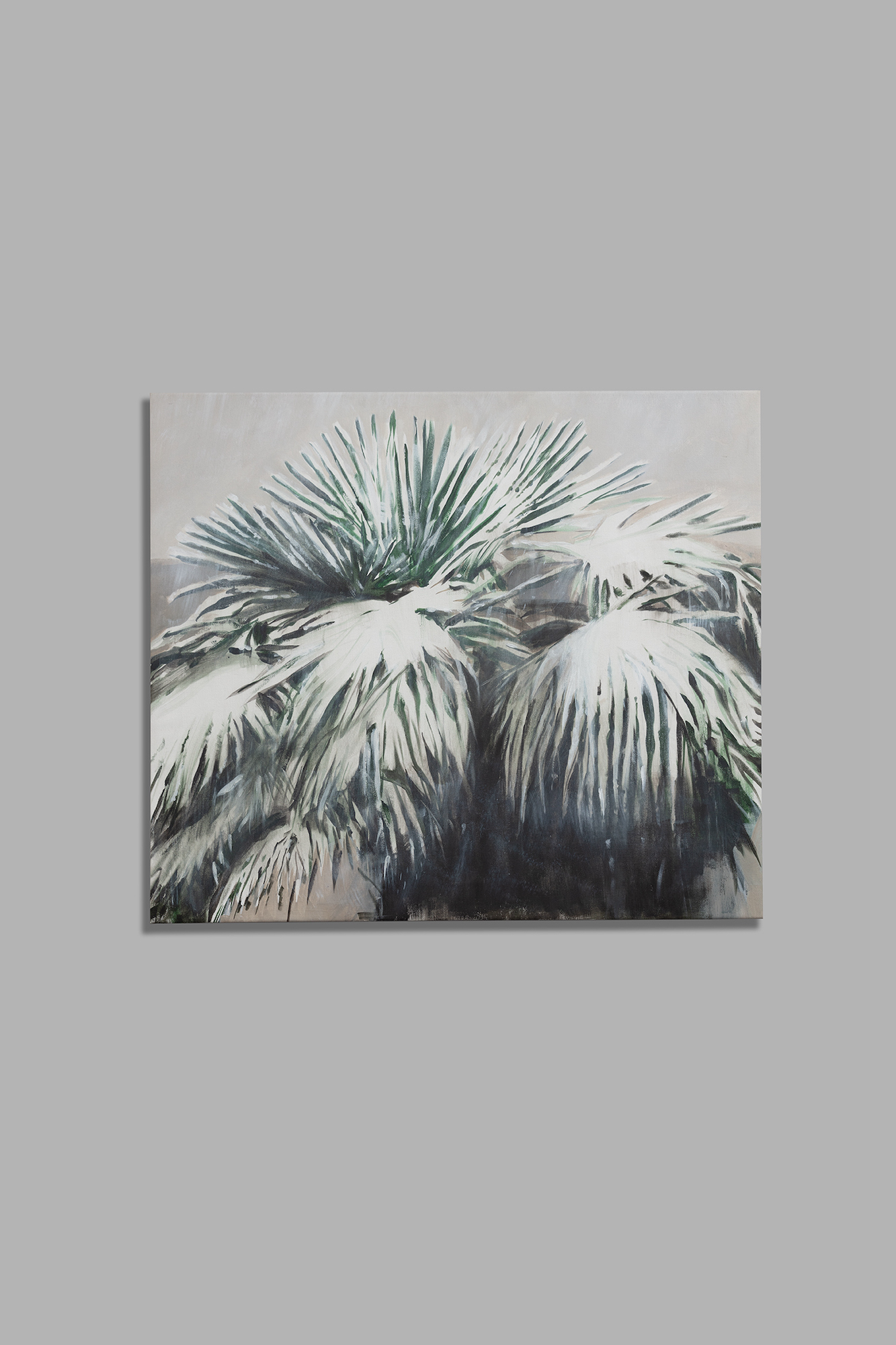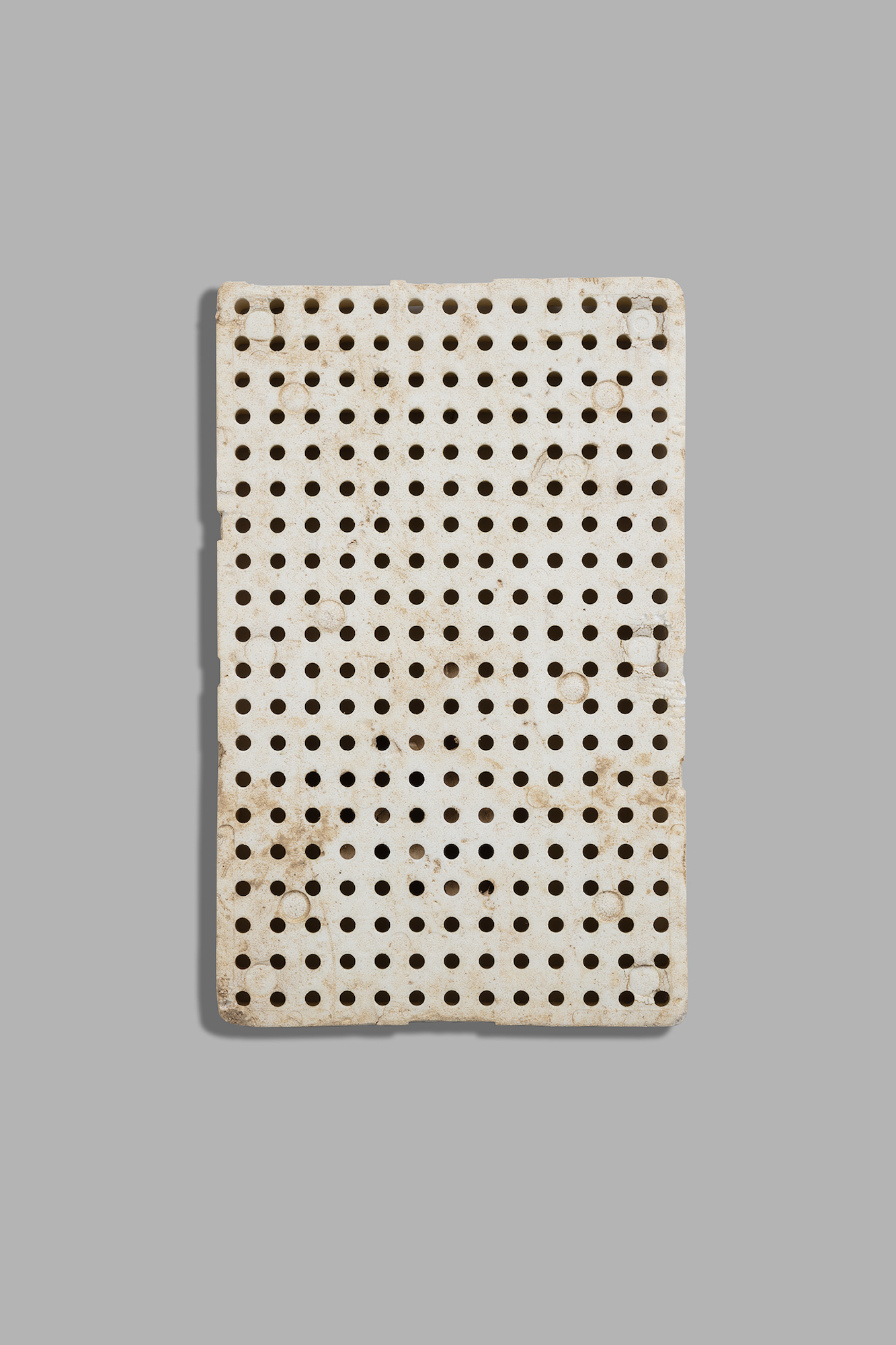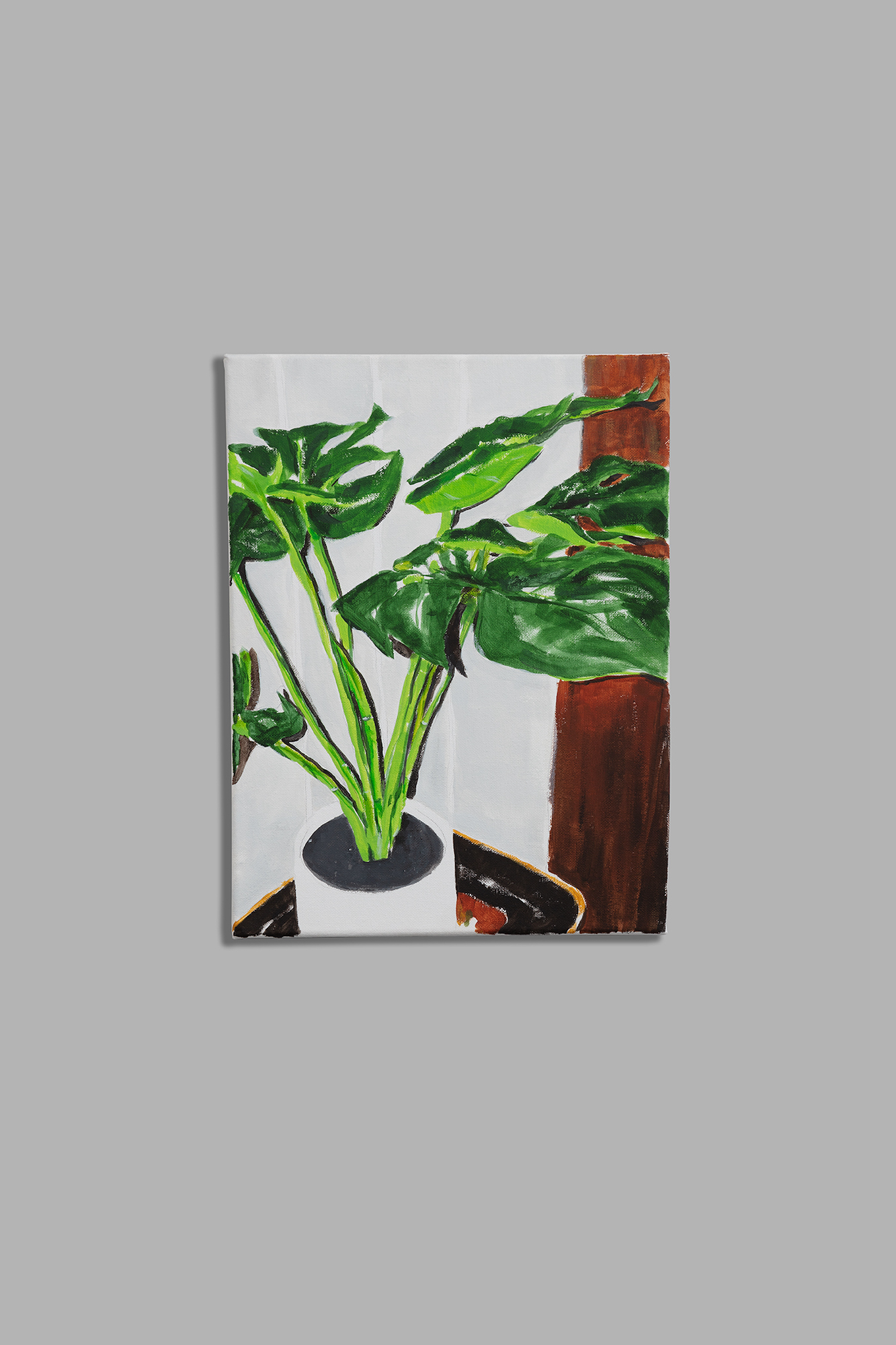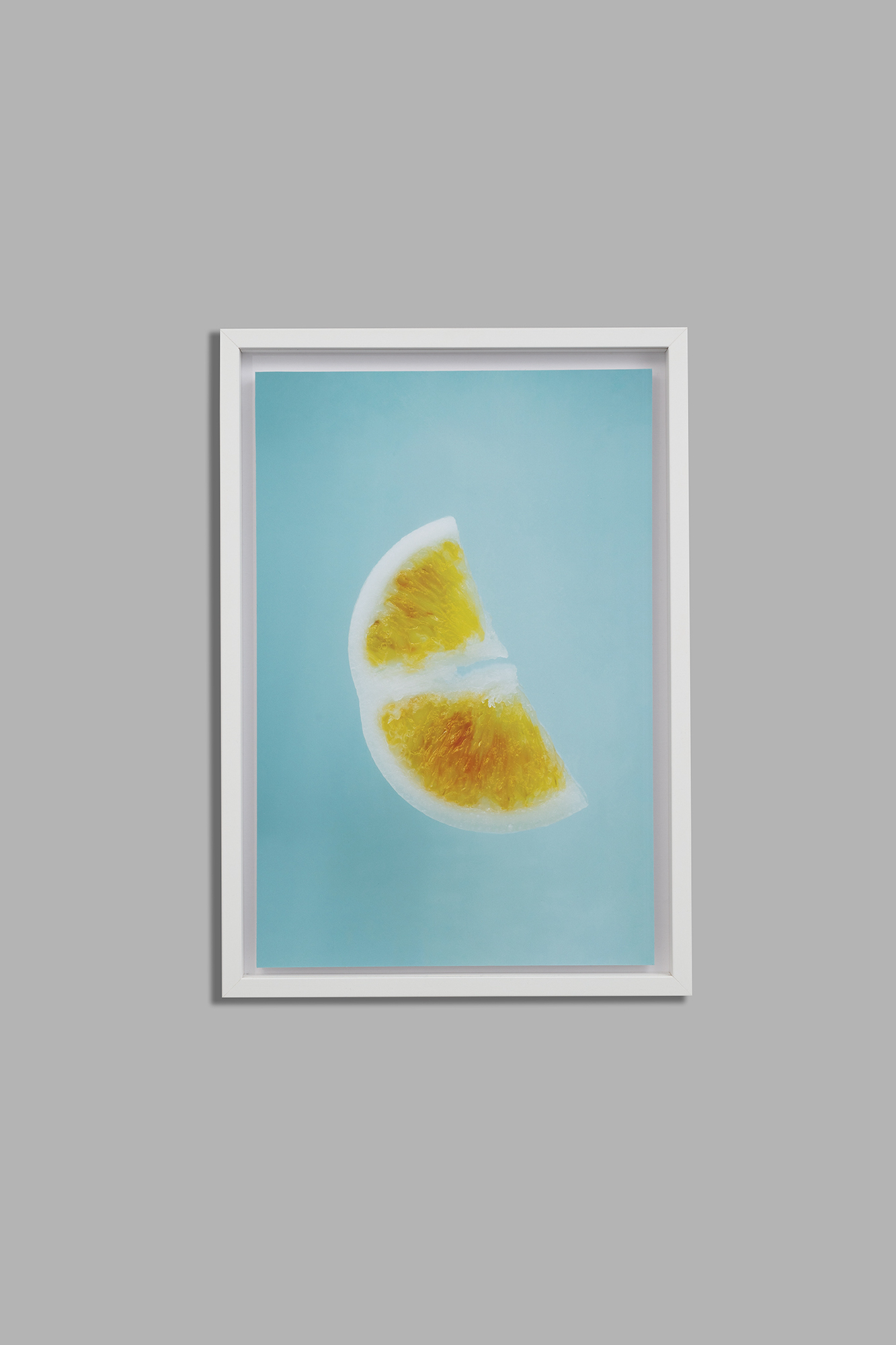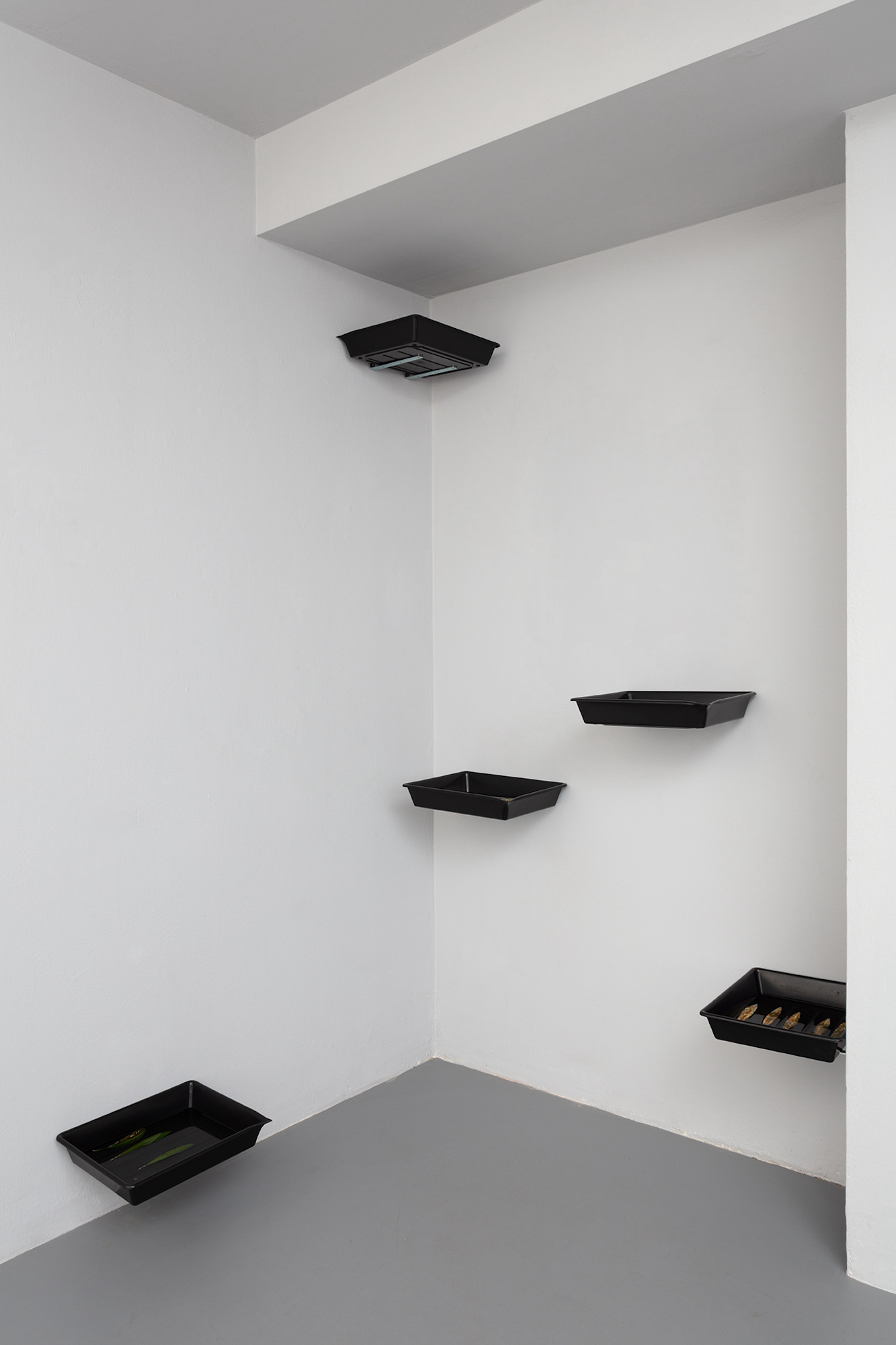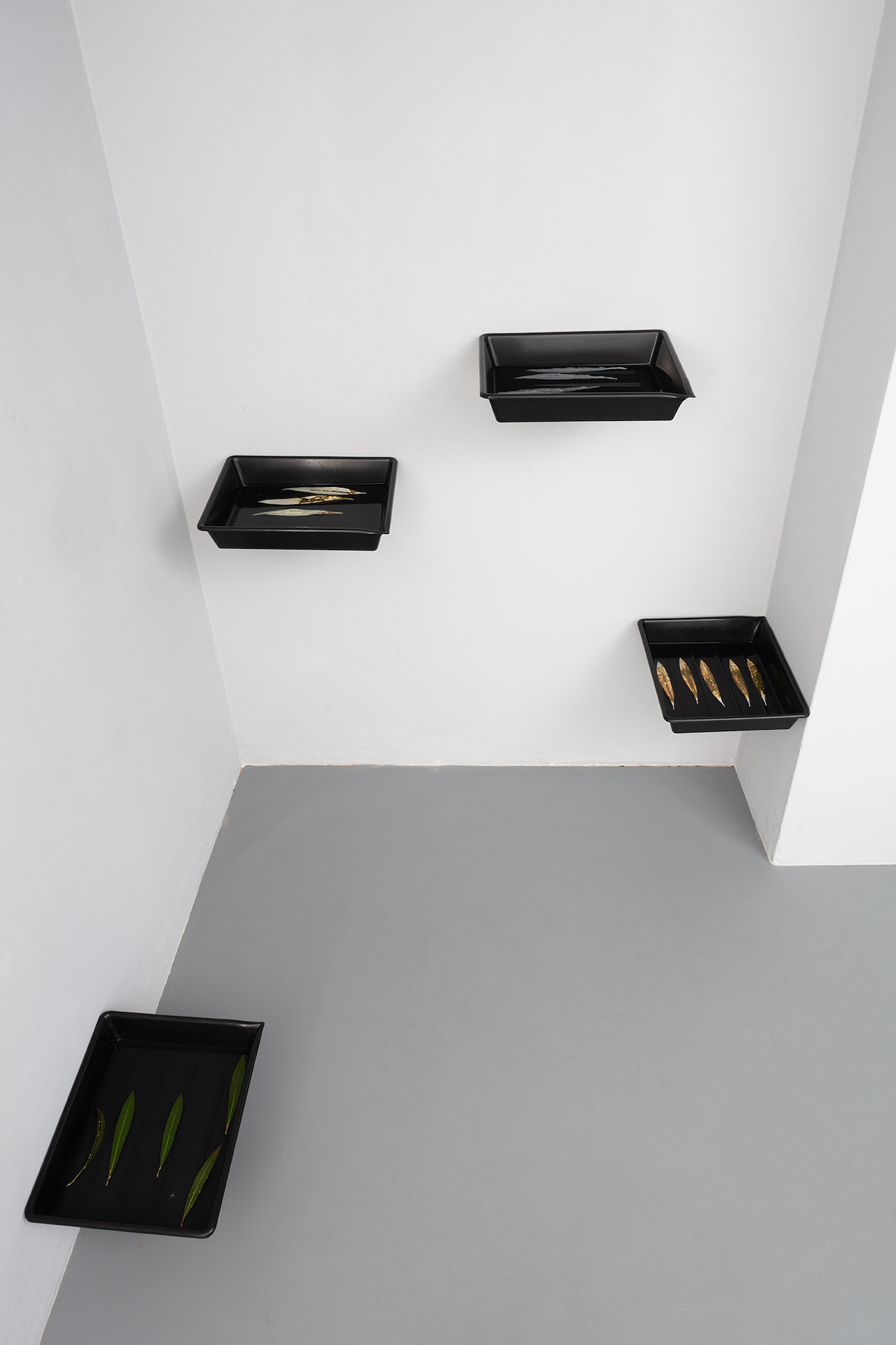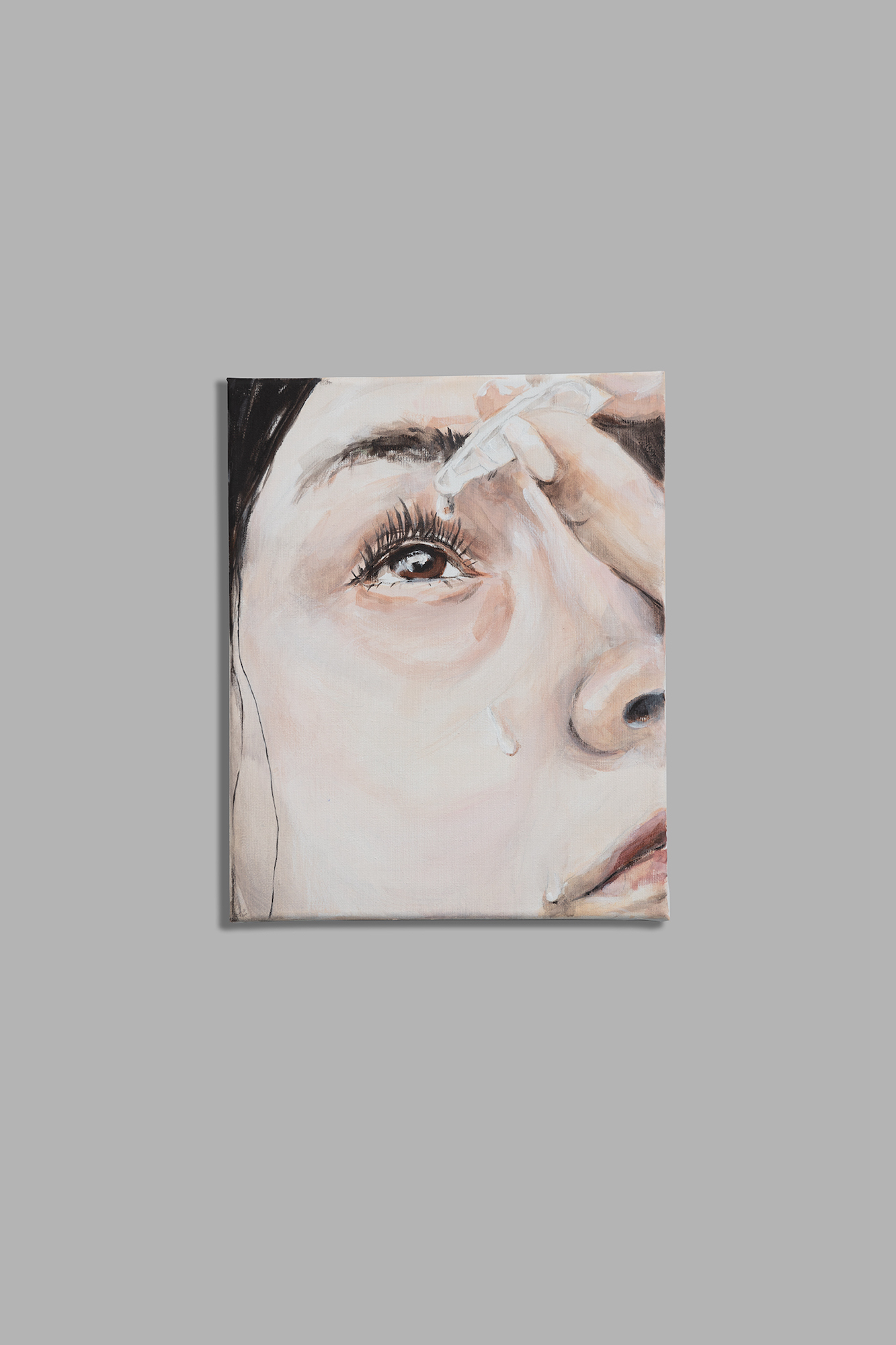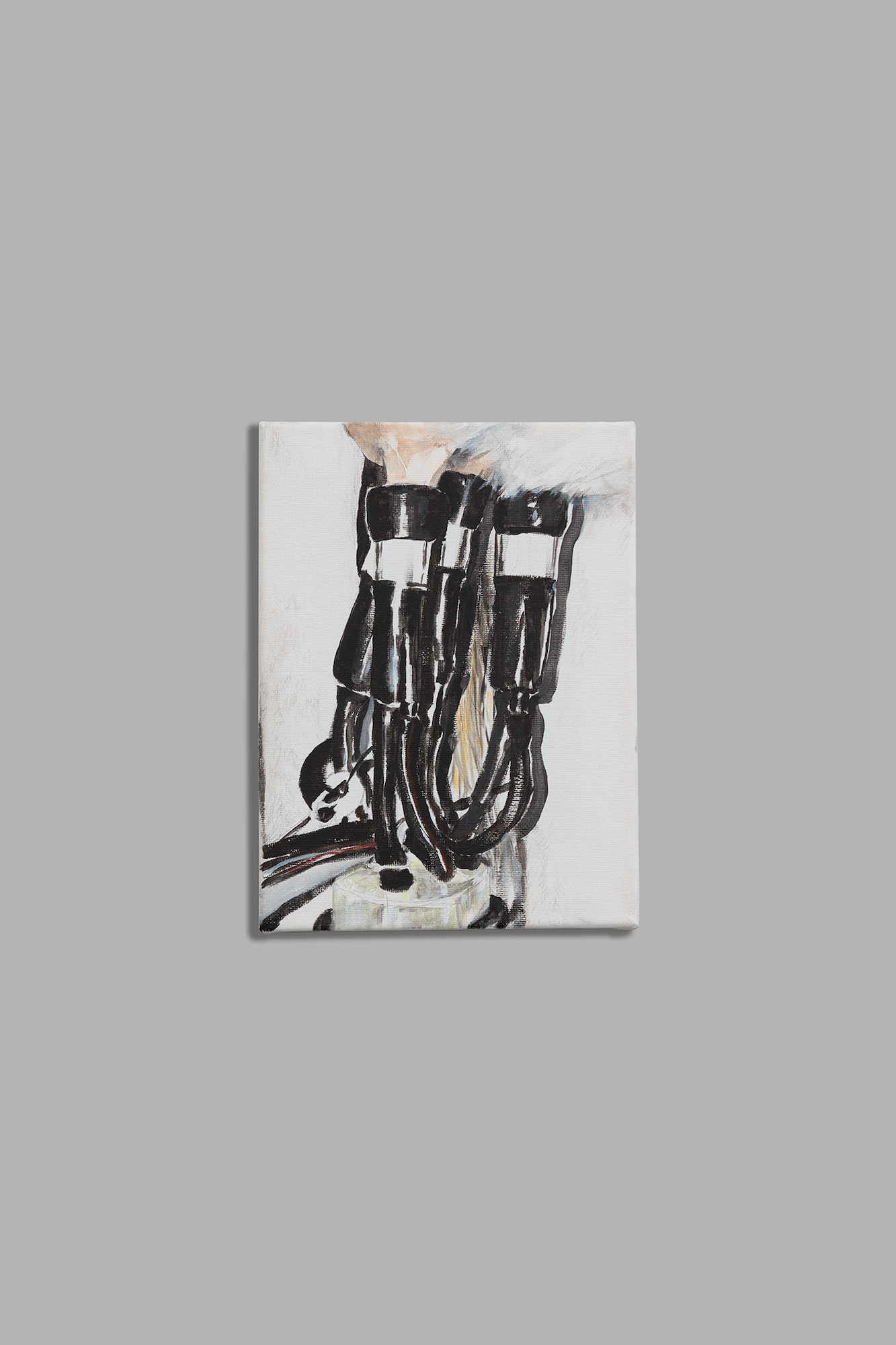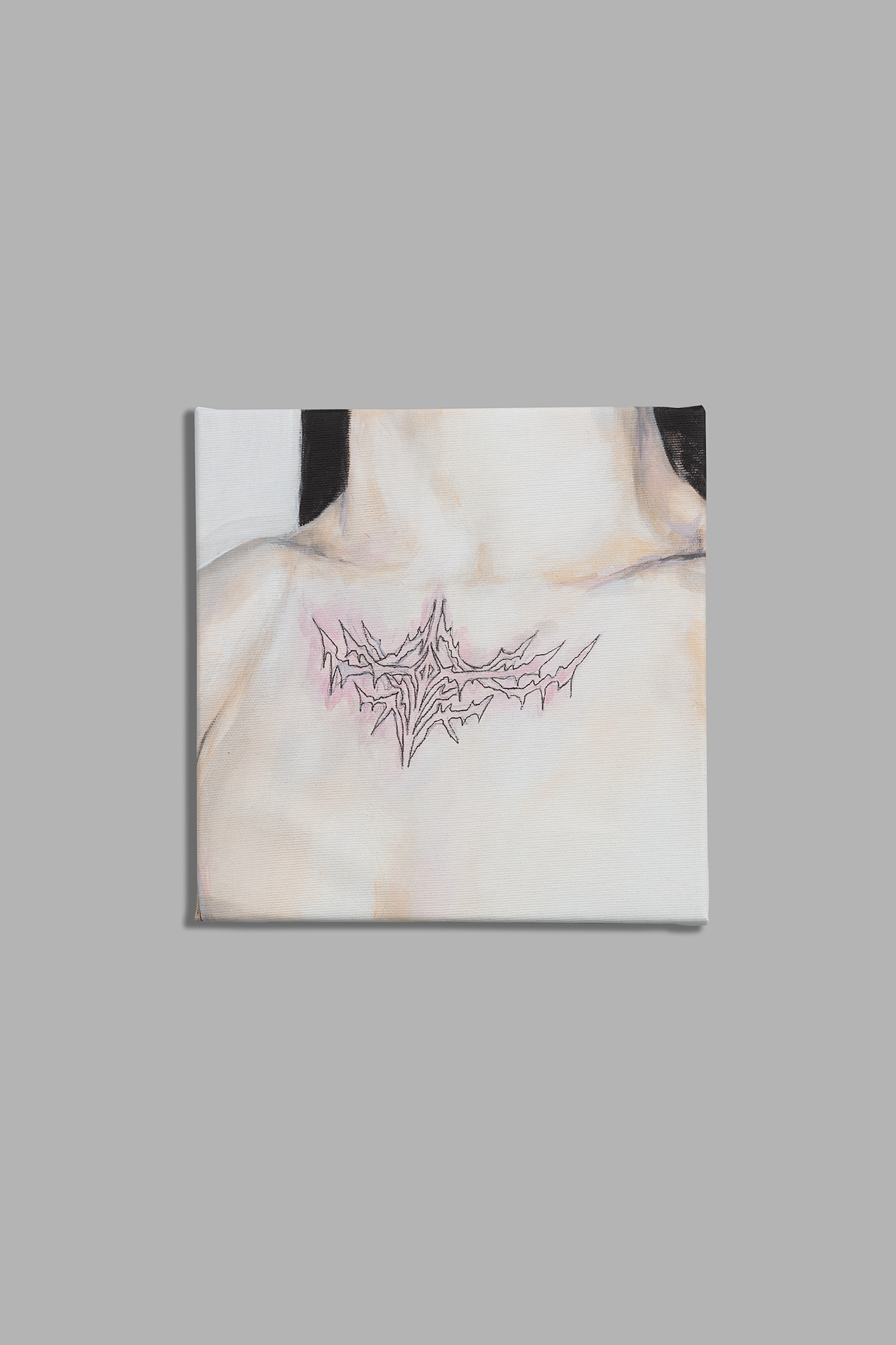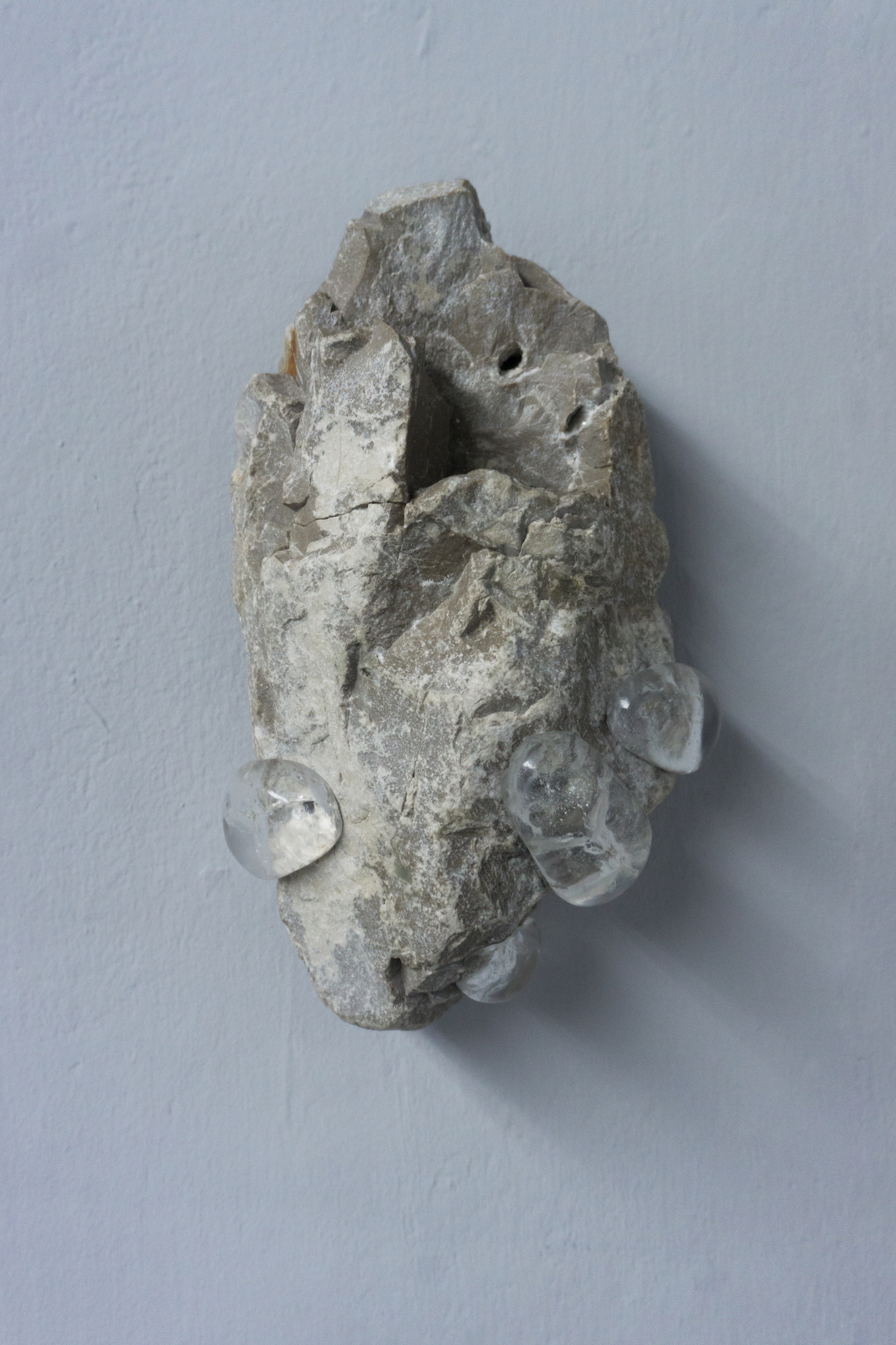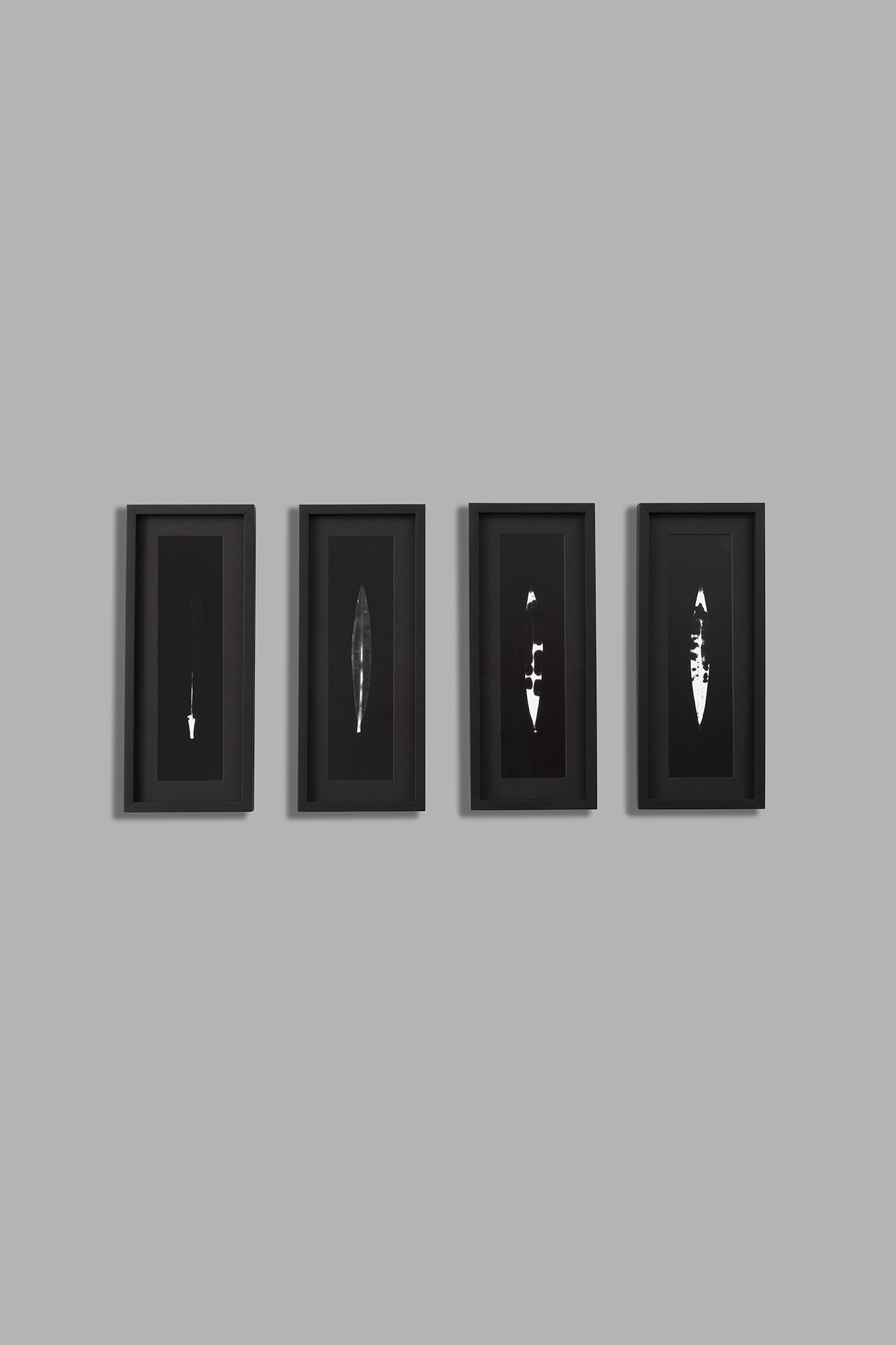Scrivere un testo, un’introduzione, per una mostra che ancora non è stata allestita è sempre abbastanza complicato, anche se il mio punto di osservazione è molto favorevole. Ho parlato con gli artisti, li ho incontrarti, ho visto i lavori definirsi, ho ascoltato i dubbi, le indecisioni, ho avuto il privilegio di condividerne le soluzioni finali. La verità è che il singolo lavoro d’arte è sempre mancante, sfugge, si muove, ha bisogno di un guardante attento in grado di leggere quello che non è ancora definito.
Agata Treccani e Marco Zilja in questa nuova mostra a Udine, presso SMDOT/Contemporary Art, da Sabato 22 Aprile, sviluppano un nuovo progetto allestendo opere inedite, ponendo come punto di partenza qualcosa che non esiste, non esiste ancora, un nuovo concetto, “NATURAL SYNTHETIC”. Queste due parole normalmente non vengono usate insieme, se usate insieme, sono divise da una lettera “e”. Naturale e sintetico, nel nostro immaginario quotidiano sono due elementi differenti, contrapposti, che si alternano identificando ambienti, cose, emozioni distinte. Grazie alla loro condizione di artisti Agata e Marco, rompono la regola, effettuano una sottrazione, cancellano la “e”, creando uno spazio vuoto, un tratto continuo invisibile, sintetico naturale, tra due concetti che si definivano contrastandosi e adesso si trovano uniti.
La mostra diventa un esercizio filosofico, estetico, visivo. L’invenzione di un nuovo concetto è la pratica caratteristica della filosofia, come ci suggerisce Gilles Deleuze, ma in questo caso la sua possibilità di verifica, esistenza e coerenza, viene affidata al campo visivo, alla creazione di oggetti, dipinti, fotografie, video, installazioni, che grazie alla loro caratteristiche estetiche provano a mostrarci l’esistenza di questo movimento continuo, la coesistenza tra sintetico e naturale. Lo spazio vuoto che si crea tra i due termini è in grado di evidenziare un terreno fecondo di riflessione, dove la tecnologia e la scienza, creazioni artificiali tipicamente umane, si confrontano con la nostra percezione del naturale, modificandolo, e venendone modificati in una continua metamorfosi.
Agata Treccani e Marco Zilja si muovono sullo stesso piano concettuale, abitano con le loro opere lo stesso spazio, ma avanzano al suo interno seguendo traiettorie differenti. Lo sguardo di Agata è esterno, la distanza è fondamentale per leggere l’oggetto che si trasforma in soggetto. Il suo sguardo ci mostra qualcosa di perturbante e misterioso, qualcosa che riconosco, ma che non so giudicare completamente, qualcosa che riconosco come vero, abituale, ma nello stesso tempo, un dettaglio, un’intuizione rende inquietante l’immagine, la realtà. Attraverso i suoi lavori intuisco, distinguo, la stranezza nell’ordinario. Uncanny valley, (installazione, video), ci mostra sulla superficie di un monitor appoggiato sopra un prato artificiale, lo scorrere dell’acqua di un torrente attraverso la vegetazione, il rumore naturale riempie lo spazio della galleria, ci porta sul suo argine, sia con lo sguardo che con l’udito, ma siamo in uno spazio intermedio, uno spazio nuovo di coesistenza. Stessa cosa accade, con una sottile ironia, guardando “Palme nevose” (acrilico su tela) e “Plastic Plant “(acrilico su tela) dove riconosciamo gli oggetti, che diventano soggetti fuori posto, ma non del tutto, perché comunque siamo abituati a vederli in quella situazione. “Lacrime artificiali” (acrilico su tela), crea un cortocircuito tra una goccia di collirio e una lacrima su un viso, tra un medicamento e un sentimento, non siamo in grado di individuare la verità, lasciandoci sospesi nell’incertezza. Tubi mammari (acrilico su tela) in maniera esplicita ci porta al naturale originario, al latte, alla mungitura, ma la tecnologia utilizzata ci lascia qualche dubbio, qualche indecisione. Skin (acrilico su tela), un segno inciso, un tatuaggio, sulla pelle, appena realizzato, la pelle reagisce alla sua “intrusione” per poi coesistere, per poi diventare un elemento di appartenenza e riconoscimento all’interno di una comunità. Tutti i lavori di Agata occupano uno spazio di mezzo, uno spazio di scambio, di creazione continua, di cambiamento. Un ponte, un movimento sintetico naturale presente anche nei lavori di Marco Zilja, ma il suo sguardo è più intimo, la sua ricerca tra alchimia, scienza e magia si svolge all’interno, parte dall’interno verso l’esterno, dal soggetto all’oggetto.
ESUVIA, (impressioni fotografiche su carta ILFORD), porta alla nostra attenzione lo sbiancamento progressivo attraverso ammoniaca, di foglie di oleandro. La documentazione impossibile di un movimento, di un processo di cambiamento, imposto da un elemento chimico. La parola chiave potrebbe essere “esposizione”. Il tempo di esposizione fotografico fondamentale per segnare, fermare, l’immagine sulla carta, ma anche il tempo di esposizione degli oggetti e di tutti noi alla mostra. Disvolva (installazione processuale), è un’installazione ambientale, realizzata con cinque vasche di plastica nelle quali, durante il periodo della mostra, si potrà verificare lo sbiancamento, delle foglie di oleandro adagiate in acqua ed ammoniaca. Ancora una volta il tempo di esposizione diventa fondamentale, un tempo di esposizione indotto dalla chimica, dalla durata fissata della mostra, dagli eventi che incontriamo. Un tempo che ci segna e ci modifica. Cose che accadono dentro, all’interno, in spazi di tempo determinati, eventi sintetico naturali, che coesistono e modificano la realtà, come evidenziato in Arancia, (stampa a getto d’inchiostro su vinile), un’arancia che perde la sua colorazione naturale, ma non la sua essenza.
Cuore di Porco, (pietre, vetrofusione in cristallo di Murano), ci porta davanti ad una scultura a parete dove si incontrano due materiali che apparentemente sono molto differenti, pietra e vetro, ma che nella realtà condividono nella loro struttura molti elementi. Inoltre la forma della pietra ricorda quella di un cuore, un cuore che non batte, un cuore dalle tonalità grigie, con delle vescicole di vetro, in grado di riflettere gli occhi di chi lo guarda. Un nuovo cuore che si muove con tempi e modalità diverse. Polistirolo 22, (polistirolo trovato in un campo), è uno scarto, che grazie all’azione di Marco diventa un resto. In questo modo una cassetta di polistirolo che un tempo fu utilizzata per trasportare delle piantine da semina di cui custodisce ancora i resti, viene raccolta e la decisione di esporla in occasione della mostra SYNTHETIC NATURAL la rende un oggetto d’arte virtuale, nel senso di contenente in potenza il concetto della mostra stessa, che non avrebbe potuto attualizzare senza l’evento.
Le traiettorie costruite dai lavori di Agata Treccani e Marco Zilja sono differenti, ma all’interno della mostra si incrociano in alcuni punti dando vita ad altre possibili soglie di senso che possono essere molto interessanti da indagare da parte di noi guardanti. Un esercizio per rendere la nostra percezione del reale basata sui misti più consapevole, più profonda, andando ad individuare quante più gradazioni possibili del reale continuando a meravigliarci.
Stefano Monti
Writing an introductory text for an exhibition that has not yet been set up is always quite complicated, although I enjoy a favourable point of view. I have talked to the artists, I visited them, I saw the works take shape, I listened to their doubts, their indecisions, I had the privilege of seeing the solutions they came up with. The truth is that every single work of art is always not there, it’s elusive, it moves, and it takes a very attentive observer to be able to read that which is not yet defined.
Agata Treccani and Marco Zilja’s new exhibition opens on Saturday 22 April at SMDOT/Contemporary Art in Udine. The project includes new works whose starting point is something that does not exist, or does not exist yet, a new concept: “NATURAL SYNTHETIC”. These two words are not normally used together and when they are, they are divided by an “and’. Natural and synthetic, in our daily imagination describe different and opposing elements, be they environments, things, distinct emotions. Thanks to their status as artists, Agata and Marco break the rule, they subtract and erase that “and” creating an empty space, an invisible continuous line, synthetic natural, between two concepts that were defined as opposing and now find themselves united.
The exhibition becomes a philosophical, aesthetic and visual exercise. The invention of a new concept is the characteristic practice of philosophy, as Gilles Deleuze suggests, but in this instance the possibility of verification, existence and coherence is entrusted to the visual field, to the creation of objects, paintings, photographs, videos and installations, which, through their aesthetic characteristics, attempt to show us the existence of this continuous movement, the coexistence between synthetic and natural. The empty space that is created between the two terms reveals a fertile ground for reflection, where technology and science – typically artificial, human creations – confront our perception of nature, modifying it, and being modified in turn in a continuous process of metamorphosis.
Agata Treccani and Marco Zilja work on the same conceptual plane, they inhabit the same space with their works, but they advance within it following different trajectories. Agata’s gaze is external, distance is fundamental in order to read the object that becomes the subject. Her gaze shows us something disturbing and mysterious, something that can be recognised, but that can’t be assessed completely, something that can be seen to be true, habitual, but a detail, an intuition makes the image and reality disturbing. Her works allow us to perceive the strangeness of the ordinary. In Uncanny valley (installation, video), stream water is seen flowing through vegetation on the screen of a monitor resting on a lawn of artificial grass. The whole gallery is filled with its natural sound, transporting us to the banks of the stream, both through our eyes and ears, although we are in an intermediate space, a new space of coexistence. The same thing happens, with a subtle irony, looking at “Palme nevose” (acrylic on canvas) and “Plastic Plant ” (acrylic on canvas) where we recognise objects, which almost become misplaced subjects – almost, but not entirely, because we are used to seeing them in that situation anyway. “Lacrime artificiali” (acrylic on canvas), creates a short circuit between eye drops and an actual tear on a face, between a medication and feelings, being unable to identify the truth, we are left suspended in uncertainty. Tubi mammari (acrylic on canvas) explicitly takes us to one of the earliest natural experiences, that of milk, and milking, but the technology used leaves us with some doubts, some indecision. Skin (acrylic on canvas), is a tattoo, an engraving on the skin. When it is first made, the skin reacts to this “intrusion”, then it learns to coexist with it, and it becomes an element of belonging and recognition within a community. All the works by Agata dwell in an in-between space, a space of exchange, of continuous creation, of change. This bridge, this synthetic natural shift also exists in the works by Marco Zilja. His gaze, however, is more intimate, his research – a combination of alchemy, science and magic – is undertaken on the inside, it moves from the inside out, from the subject to the object.
ESUVIA, (photographic impression on ILFORD paper), presents us with the progressive bleaching of oleander leaves with ammonia. The impossible documentation of a shift, of a process of change, imposed by a chemical element. The key word could be “exposure.” In photography the exposure time is fundamental to mark and fix the image on the paper, but exposure time is also that of the objects and of all of us at the exhibition. Disvolva (installation), is an in-situ installation, it consists of five plastic tanks where visitors can witness, for the length of the exhibition, the bleaching of the oleander leaves placed in water and ammonia. Once again, the exposure time is fundamental, an exposure time determined by chemistry, by the duration of the exhibition or by the events. A time that marks us and changes us. Things that happen inside, within, in determined time lapses, in synthetic natural events, which coexist with and modify reality, as can be seen in Orange, (inkjet printing), an orange that loses its natural coloration, but not its essence.
With Cuore di Porco, 2023, (stone, cast Murano crystal glass), we find ourselves before a sculpture on a wall made with two seemingly very different materials, stone and glass, which in reality share many elements in their structure. The shape of the stone resembles that of a heart, a heart that does not beat, a grey heart with glass ventricles reflecting the eyes of those who look at it. A new heart that moves with different times and modes. Polistirolo, (found on a field), is waste, which becomes an leftover thanks to Marco’s action. This work consists of a found polystyrene box used to contain seedlings, with traces of the seedlings still inside. The decision to exhibit it at the SYNTHETIC NATURAL exhibition makes it a virtual art object, as it contains within it the concept of the exhibition itself, something which could not have been realised without the exhibition existing.
The trajectories of the works of Agata Treccani and Marco Zilja are different, but they intersect at points within the exhibition generating other possible thresholds of meaning that may prove highly interesting for viewers to investigate. An exercise in taking a more conscious approach to our perception of reality based on combinations. Something that is deeper, that seeks to identify as many degrees of reality as possible, and something that continues to amaze us.
Stefano Monti
